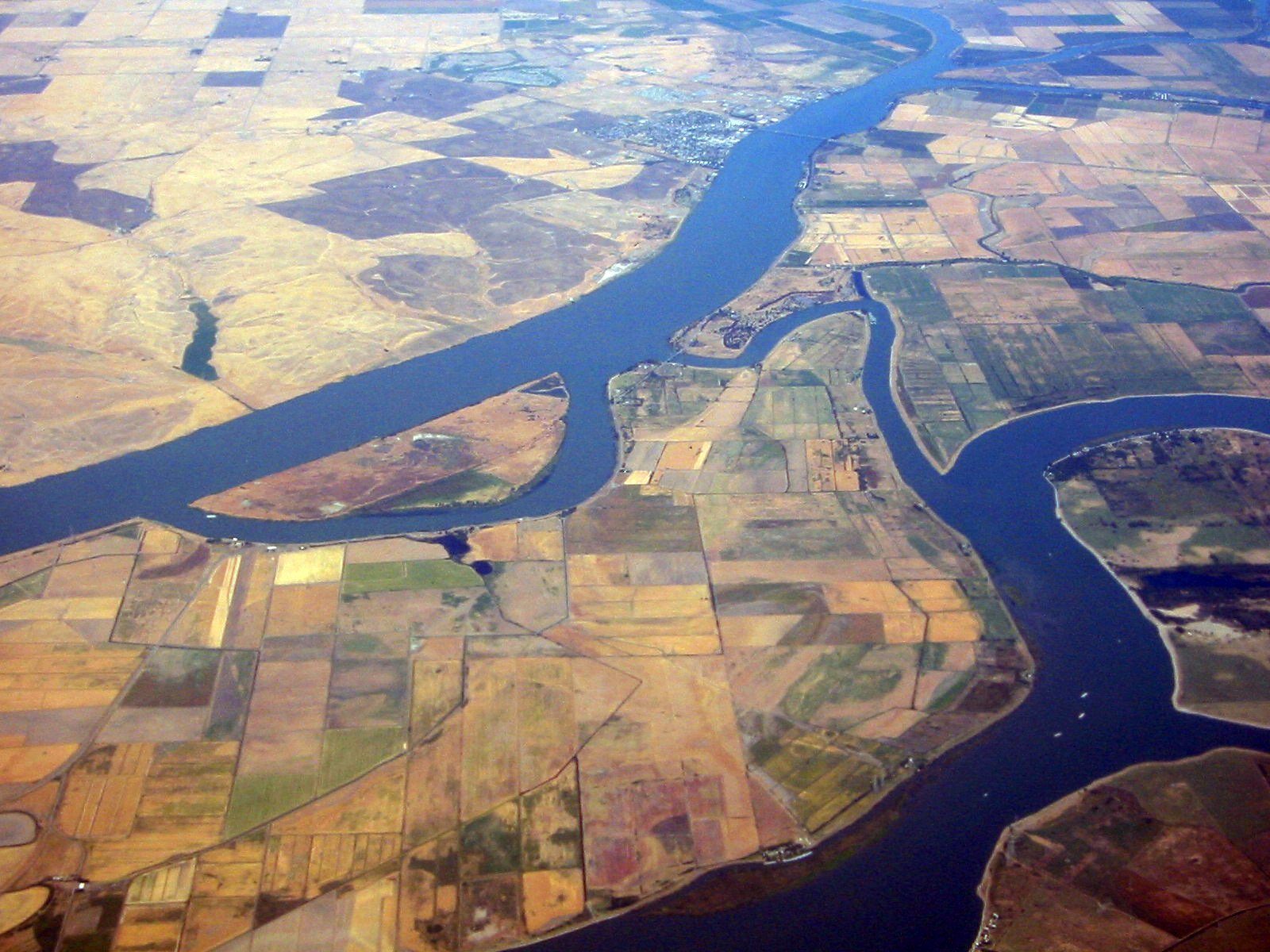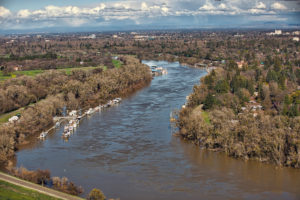In his first State of the State address, Governor Newsom made big news in February. He proclaimed the controversial Twin Tunnels water conveyance plan officially dead. But he then expressed support for a one-tunnel plan. Bay-Delta activists welcomed the speech with gratitude and concern.
Victory!
On the one hand, the decade-long fight over Governor Jerry Brown’s environmentally destructive and expensive Twin Tunnels proposal, which would have funneled water from the Sacramento–San Joaquin River Delta to southern areas, including Silicon Valley’s Santa Clara Valley Water District, was finally over, and that was worth celebrating. The proposed 40-foot-diameter underground tunnels, running from near Sacramento to northeast of Tracy, would have impacted water quality for Delta communities, harmed imperiled fisheries, and allowed more saltwater intrusion from San Francisco Bay.
While supporters of this plan, known as California WaterFix, claimed it offered environmental benefits for the San Francisco Bay–Delta area, the expensive and controversial Twin Tunnels never mustered the state and federal permits required to move forward. By 2017, the powerful San Joaquin Valley agricultural interest Westlands Water District had pulled its financial support, and finally Governor Newsom pulled the plug. For that, we salute him.
After more than 12 years of daily combat with two prior governors, and as executive director of a grassroots nonprofit with 60,000 supporters that’s campaigned to save the Delta since 2006, I can say that the voices of Delta people, government agencies, water districts, legislators, lawyers, and environmental groups; the environmental justice community from the Delta and Southern California; and Northern California Indian tribes and fishing groups were finally heard. Our collective analysis and presence at two years of State Water Board hearings mattered.
But Maybe One Tunnel?
Still, the idea for a one-tunnel water-conveyance project around the Delta, for which Governor Newsom voiced support, raises many questions that will need to be answered as a proposal is crafted.
The primary purpose of a single Delta tunnel is no different than the purpose of twin tunnels: to facilitate water transfers from Northern to Southern California. A large single tunnel can do as much environmental damage, if not even more, than two tunnels. And even a cheaper, one-tunnel project might not pencil out financially. The Metropolitan Water District of Southern California continued pushing for the Twin Tunnel plan in 2018, rejecting a single-tunnel plan because it would not deliver the amount of water desired for the investment required to build it.
Bay-Delta residents understand the need to share water with the southern half of the state, but it must be at sustainable levels that don’t decimate salmon runs or lead to toxic algal blooms in Delta waterways. We believe the single-tunnel idea is an entirely new project that requires new and more public processes to examine. The Twin Tunnels plan was drawn up largely in private and presented to the public as a fait accompli. Advancing a single-tunnel plan should be a completely transparent, public process. Let’s make sure Department of Water Resources and Bureau of Reclamation work for all Californians and not just special-interest water districts this time around.
A Portfolio of Solutions for California Water
Before any single-tunnel proposal is considered, many shovel-ready projects should be presented right now as worthy of every Californian’s support. These projects, known as “portfolio” solutions to California water issues, include urban water recycling, groundwater recharging, agricultural conservation, toxic farmland retirement, and stormwater capture. For example, Los Angeles now proposes to recycle all the wastewater produced at the Hyperion Water Reclamation Plant in Playa Del Rey by 2035, supplying potentially 35 percent of the city’s water. Reusing locally available water is now technologically feasible and far cheaper than building new infrastructure to import water from hundreds of miles away.
We were encouraged when Wade Crowfoot, the new secretary of the California Natural Resources Agency, told KQED’s Forum he wants to work on portfolio solutions before getting into debates about whether there should be one tunnel or no tunnel. If California puts projects for regional water sustainability first, the need for a tunnel diminishes.
Looking Forward
Expecting a governor who must represent the interests of all the state’s people to pick one side in California’s ongoing water battles is unrealistic. Governor Newsom is setting his own priorities, and to get his agenda implemented he is not going to alienate the sizable and powerful water interests, such as Westlands or the Metropolitan Water District of Southern California, as he pursues noble goals like making sure every resident in California has clean drinking water.
We look forward to participating in the new process with an open mind. But a single tunnel is not a silver bullet for restoring the Delta nor for ensuring a reliable water supply for our neighbors to the south. We are happy to evaluate the Newsom administration’s plan, when it is written. We will insist that any new tunnel proposal helps enact the state’s coequal goals of restoring the Delta while improving water supply reliability.
In conclusion, we’re dancing, singing, having a few drinks, and celebrating what we have achieved together in this long fight to protect the Delta. Now we’ll work harder than ever to restore what has been lost in our estuary and to create a more sustainable future for California water. υ





